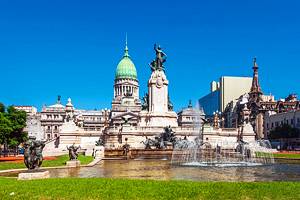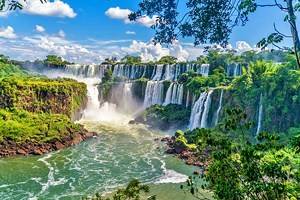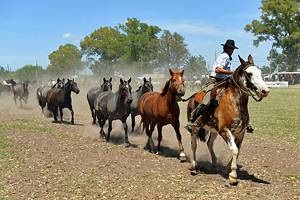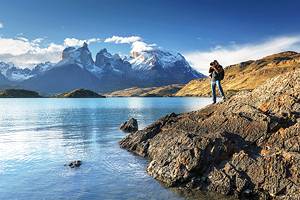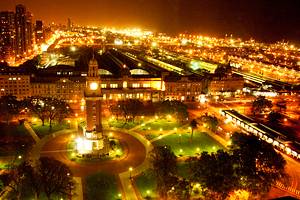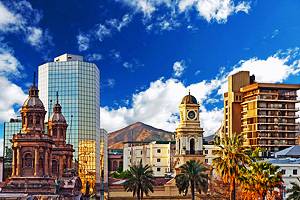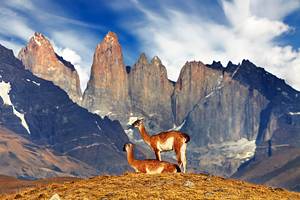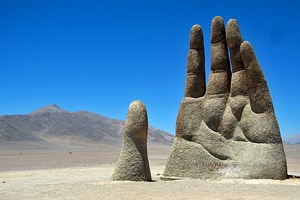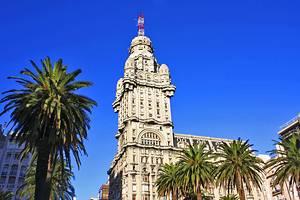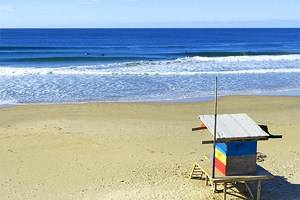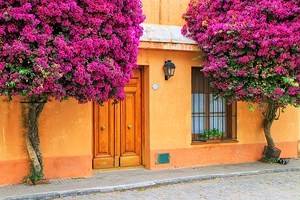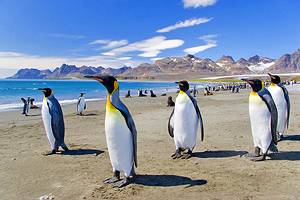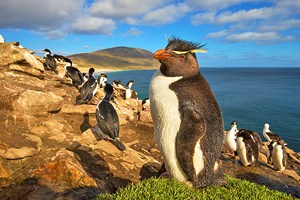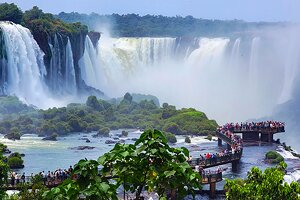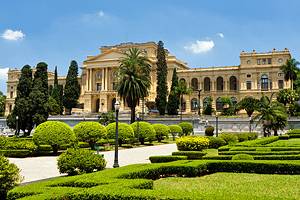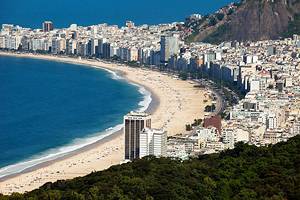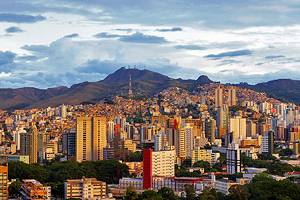Tourist Attractions in Argentina
Argentina's diverse geography is one of the country's main attractions. It encompasses everything from harsh deserts to humid jungles, and long ocean beaches to the soaring Andes. Stretching from the subtropical north to the subantarctic regions of beautiful Patagonia in the south, Argentina's cultural, artistic, and architectural heritage is just as diverse, drawing upon influences from around the world.
With its wonderful barrios, including colorful arts neighborhoods such as La Boca, old-world Recoleta, and trendy districts like Palermo, Buenos Aires sometimes feels more like Europe than Latin America. This lively capital city is the best place to begin sightseeing (it's also the best place to learn to tango, the most iconic of Argentinian dances).
In addition to its many cultural attractions, the other big draws – and for some tourists, its greatest appeal – are the country's natural wonders, including the breathtaking Iguazú Falls, the world's largest group of waterfalls.
To make sure you find all the best places to visit and things to do, use this handy list of popular tourist attractions in Argentina.
Iguazú Falls
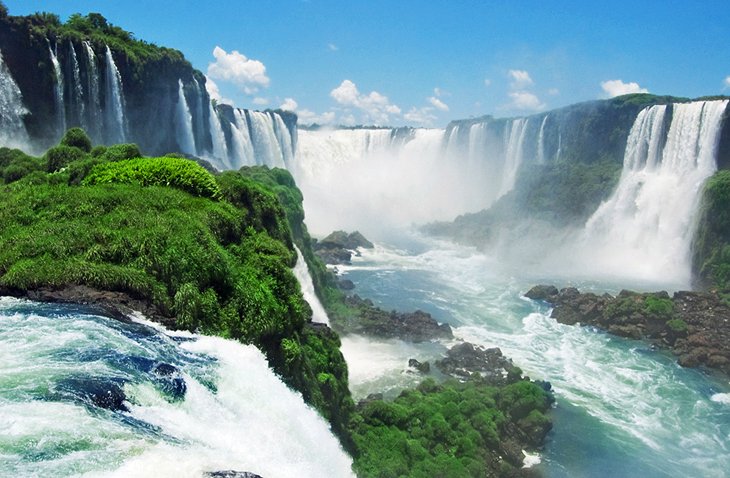
The stunning Iguazú Falls lie along Argentina's border with Brazil, with Iguazu National Park on the Argentinian side and Iguaçu National Park on the Brazilian side. Protected as a UNESCO World Heritage Site, these huge waterfalls are undoubtedly one of the most spectacular sights in South America.
Iguazú Falls are, in fact, not one waterfall but are composed of nearly 300 individual falls along a nearly three-kilometer edge, a number that varies depending on the season, with heights ranging from 60 to 82 meters, and each as spectacular as the next.
The Argentinean side of the falls has viewpoints primarily along the top of the waterfalls and gives you views down into the gorge, as well as taking you closer to the raging waters. The Brazilian side offers the iconic panoramic views of the entire system of waterfalls.
Served by an international airport in Argentina (and one in neighboring Brazil), it's relatively easy to visit, particularly if flying from Buenos Aires.
Perito Moreno Glacier
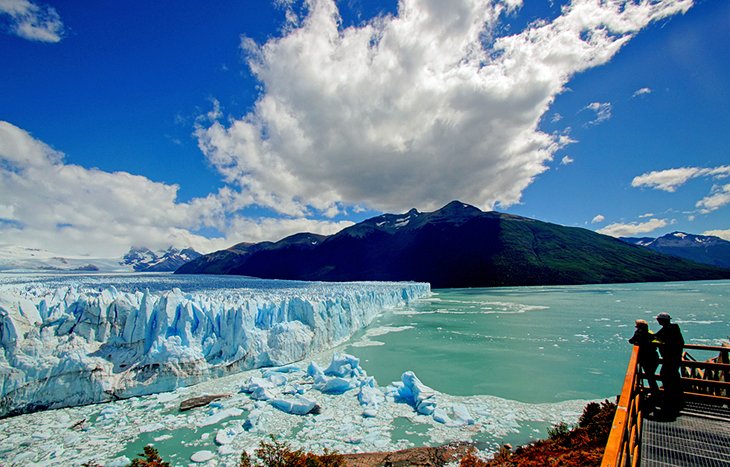
The main hub for tourists visiting the UNESCO World Heritage Site of Patagonia's Los Glaciares National Park, the small town of El Calafate offers plenty of accommodation options and other amenities for visitors.
It's here that most visitors join excursions to see the park's popular glaciers, most notably the stunning Perito Moreno Glacier, a massive 30-kilometer-long ice formation just 78 kilometers from the town center.
Named after a 19th-century explorer, it's just a two-hour trip from El Calafate to the glacier's large visitor center, and from here just a short walk to the glacier. For those wanting to climb the glacier, ice trekking tours are available that range from an hour's walk over the ice formation to longer five-hour excursions.
Another important feature of Los Glaciares National Park is the 3,359-meter-tall Monte Fitz Roy, a stunningly beautiful mountain straddling the border with Chile that is reputably harder, from a technical perspective, to climb than Everest.
Official site: www.losglaciares.com/en/index.html
Recoleta, La Boca, and Tango in Buenos Aires
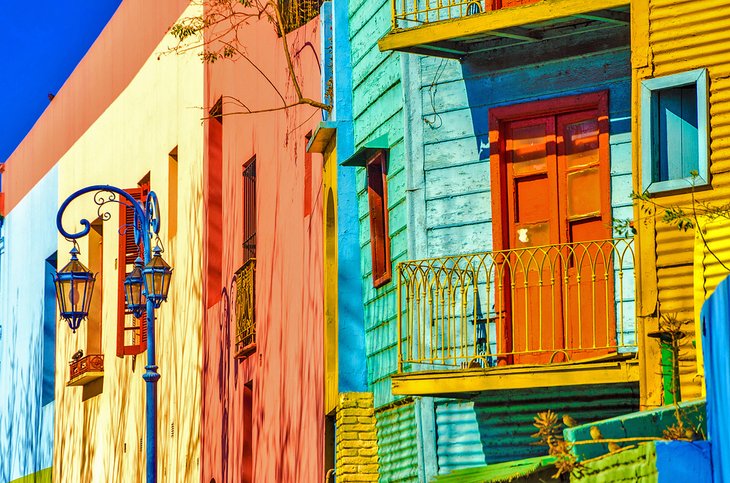
One of South America's most attractive cities (also one of the largest), Buenos Aires is often the first glimpse of Argentina most visitors will have before heading off to popular tourist destinations such as Patagonia.
But the smart ones will linger here and take in the many delightful museums and art galleries housed in the splendid old colonial buildings spread across the city's districts or barrios.
Be sure to visit La Boca, Buenos Aires' most colorful neighborhood and home to the quirky Caminito Street Museum, a splendid pedestrian zone and open-air museum popular for its brightly painted houses, amusing sculptures, cafés, music, and tango dancers in the streets.
Fashionable Recoleta is another must and is where you'll find the Recoleta Cemetery, with its elaborate mausoleums containing the remains of such famous Argentinians as Eva (Evita) Perón, along with numerous public gardens, museums, art galleries, cafés, and boutique shops.
Other districts to explore if time permits are Palermo and Belgrano with their wide boulevards and palatial mansions, and, in the downtown core, the delightful Plaza de Mayo.
- Read More: Tourist Attractions in Buenos Aires
Tierra del Fuego National Park
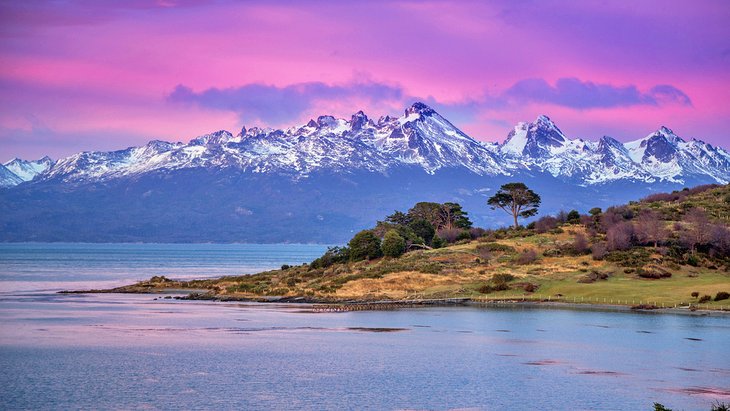
The 156,000-acre Tierra del Fuego National Park extends all the way from Beagle Channel to the Chilean Border and northwards to Lago Kami. It's a paradise for hikers, with trails for all experience levels.
Using the town of Ushuaia as a base, adventurers head out onto the park's hiking trails or along the coastline to explore its dramatic scenery, which includes everything from tall waterfalls, dense forests, and mountains, to beautiful glacier-fed lakes such as Roca and Fagnano.
One of the most popular routes is Senda Costera, a coastal path to Lake Roca from Ensenada Bay that offers a chance to see a rich diversity of wildlife, including Andean condors. In Ensenda Bay, be sure to stop by the End of the World Post Office (really just a rustic hut on a dock over the water) where you can send a postcard with a special "End of the World" stamp to your friends back home.
Those who prefer to see some of the sights in comfort, or those who are train buffs, can take a seven-kilometer-long, 50-minute ride on the Southern Fuegian Railway, an antique steam train that runs through the park to Cañadon de Toro.
Puerto Madryn and the Valdés Peninsula
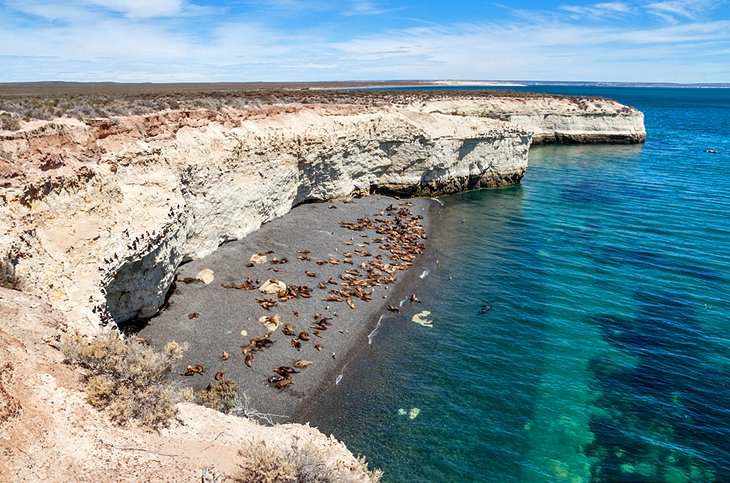
The city of Puerto Madryn lies on the shores of Golfo Nuevo in one of the most sheltered places on the Patagonian coast. Founded by Welsh settlers in 1886, the city's deep-water port and abundant nature reserves make it one of the most popular cruise destinations in Argentina.
Its rugged coastline attracts water sports enthusiasts, particularly windsurfers who enjoy defying the strong Patagonian winds. Nature lovers find plenty of things to do on the Valdez Peninsula, an important nature reserve listed as a UNESCO World Heritage Site for its diverse wildlife.
Guided tours of the reserve are a must, and visitors normally leave, depending on the season, having seen everything from Southern Right whales (June-December), along with elephant seals, sea lions, and orcas (February-March). It's also an important breeding ground for migratory shorebirds, in particular Magellanic penguins (September-March).
Learn more about the environment of this beautiful coast at the Natural Science and Oceanographic Museum, set in a beautiful heritage building overlooking the harbor. The museum features displays of Patagonian flora and fauna, including a whale skeleton and a fascinating exhibit about giant squids.
Ushuaia: The End of the World
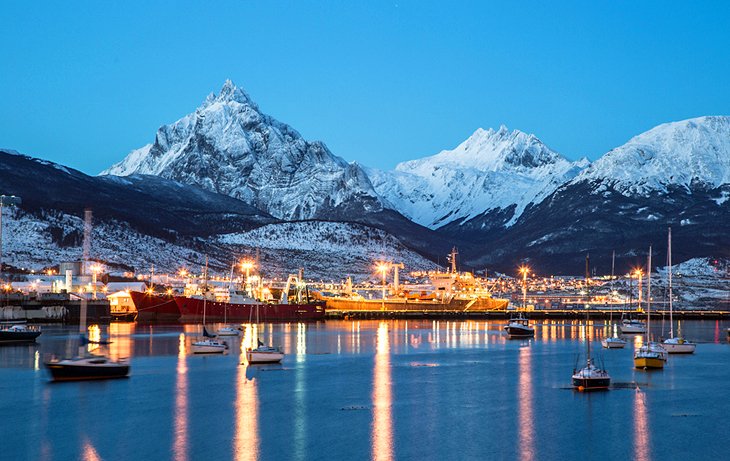
At the southern end of Argentina, Patagonia is famous for its spectacular landscapes: a dramatic mix of the Andes and long stretches of plains and plateaus. Most adventures here start in Ushuaia, the world's southernmost city.
Established as a penal colony in the early 20th century and now a popular jumping-off point for trips to Antarctica or around Cape Horn, this town on Beagle Channel is surrounded by a unique landscape of mountains, sea, glaciers, and woods on the edge of the Tierra del Fuego National Park, with its spectacular scenery and diverse flora and fauna.
Popular places to visit include the nearby Les Eclaireurs Lighthouse. Note that this is not the End of the World Lighthouse built in 1884 featured in Jules Verne's novels; that particular lighthouse is the San Juan de Salvamento Lighthouse, and it is located on the much more remote Isla de los Estados.
Worth a visit is the End of the World Museum. Here, you'll find exhibits relating to the region's natural history, whaling, seafaring, Aboriginal life, and early penal colonies. The Maritime Museum of Ushuaia is housed in the town's notorious former military prison, is worth visiting for its many maritime artifacts and scale models of famous ships such as Darwin's Beagle.
Named for Darwin's ship, the Beagle Channel cuts through the heart of the national park, and you can board a boat in Ushuaia to cruise through this historic waterway.
Bariloche and the Route of the Seven Lakes
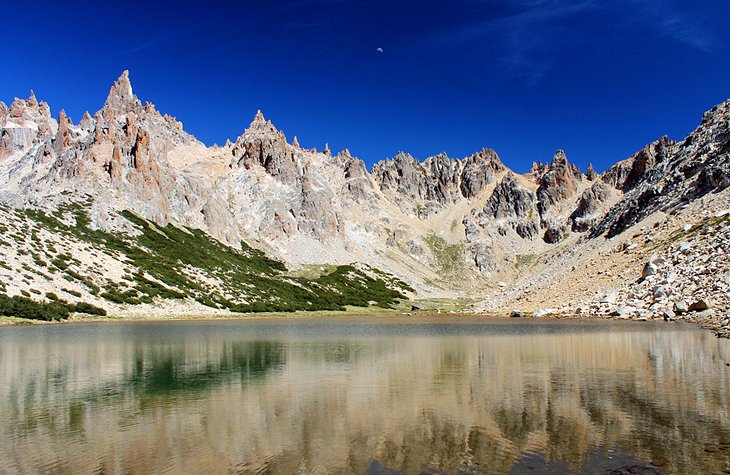
Usually simply referred to as Bariloche, San Carlos de Bariloche is a lively city set in the midst of Nahuel Huapi National Park, and Patagonia's northern Lake District.
Skiers, especially those from the Northern Hemisphere seeking snow in the height of the northern summer, flock to Bariloche for nearby Cerro Catedral, the tallest of its peaks and a popular ski resort.
One of the largest ski resorts in South America, Cerro Catedral includes more than 100 kilometers of ski terrain and is particularly popular for its stunning views over Nahuel Huapi Lake, in the middle of the national park.
Bariloche is a center for active adventure and for exploring the park's mountains, lakes, waterfalls, forests, glaciers, and extinct volcanoes. Although the region is rich in opportunities for hiking, rafting, cycling, and climbing, a driving circuit known as the Route of the Seven Lakes takes tourists to the alpine lakes of Nahuel Huapi, Espejo, Escondido, Falkner, Villarino, Correntoso, and Machónico.
Mendoza
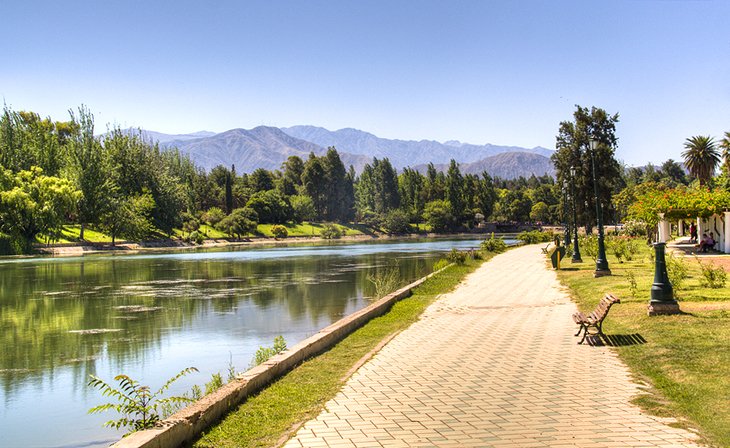
Undoubtedly one of Argentina's most beautiful cities, filled with Art Deco architecture, Mendoza is as popular with outdoor enthusiasts in winter as it is in summer. When the snow flies, skiers from across South America experience some of the Andes' best ski slopes at the popular resorts of Las Leñas, renowned for its steep terrain, and Los Penitentes, just 25 kilometers from the border with Chile.
In the summer, these same areas are popular among hikers and climbers, many aiming for the top of the 6,960-meter-tall Aconcagua mountain. Other outdoor activities include whitewater rafting and trail riding, with some riding stables offering overnight adventures with camping under the stars.
Also famous for its olive oil production, Mendoza has many other attractions, including a number of museums and annual festivals, as well as a bustling Central Market (Mercado Central) where locals buy produce, meat, and fish, and where visitors can find food stalls and restaurants.
Historic Córdoba Cathedral
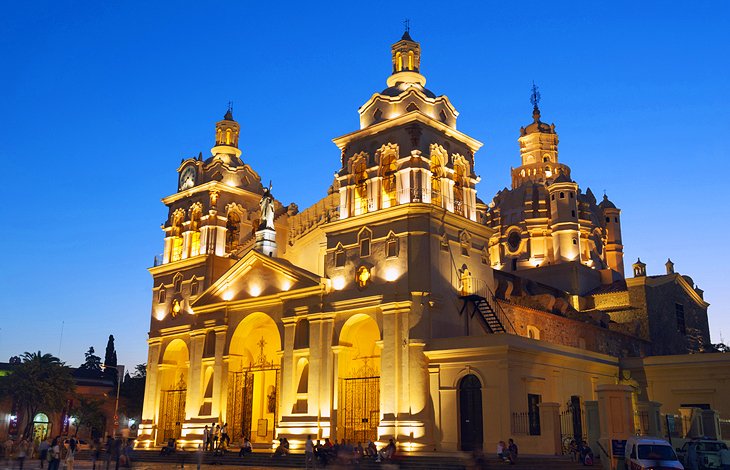
In central Argentina, a five-hour drive from Buenos Aires, Córdoba is the country's second-largest city and is often used as a stopover on trips into the Andes. Most of the city's finest old buildings date back to the early colonial period of the 16th century.
Explore the historical center of the city around Plaza San Martín, now a UNESCO World Heritage Site. Here, you'll find the beautiful Cathedral of Córdoba, a splendid mix of Baroque and Neoclassical styles that can trace its roots back to the original Roman Catholic church built here in 1580.
Highlights of the structure, much of which dates from the 18th century, include an ornate interior with exquisite 20th-century frescoes and murals painted by leading Argentinian artist Emilio Caraffa, a native of Córdoba.
Note also the unique silver altar and an important collection of gold votive offerings. Below, the crypts are the final resting place of a number of important Argentinians.
One of the favorite things to do in Argentina is learn to tango, and you can take classes at the Cabildo, a cultural center, and mix with locals who go there to dance.
Beaches of Mar del Plata
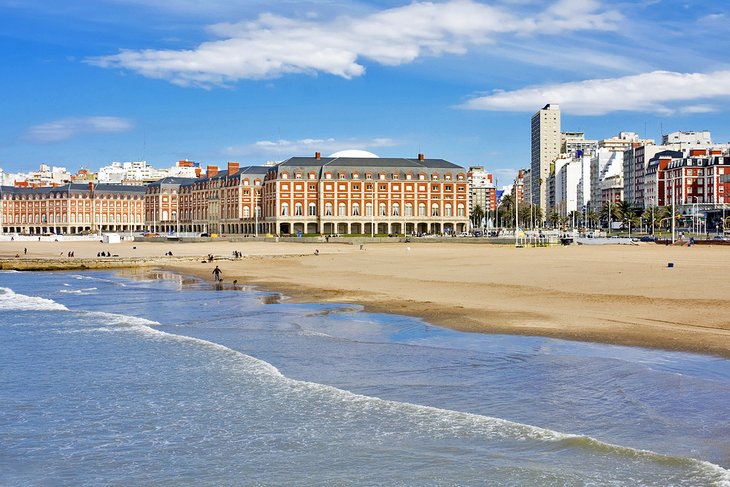
Some of the best beaches in South America are in the relatively modern city of Mar del Plata, on the Atlantic coast 400 kilometers from Buenos Aires. Here, the beautiful beaches sprawl for more than eight kilometers of coast that's also marked by windswept dunes and dramatic cliffs.
Nearest Mar del Plata's modern cruise ship ports are the Chica and Grande beaches (they're also popular among sea lions, many of which hang out in the waters around the city's fishing wharves).
Once a playground for the rich, the city is a mix of fine old mansions, which mingle with newer resorts along the city's splendid waterfront, with its numerous parks, squares, and gardens.
Mar del Plata is home to the excellent Juan Manuel Fangio Museum, dedicated to one of the world's greatest Formula One drivers and containing more than 100 cars and 500 trophies. A highlight is an exhibit dedicated to the first automobile, an 1886 Daimler.
One of the most popular things to do for families is a visit to the Mar del Plata Aquarium with its many marine attractions, including dolphin and seal shows, penguins, tortoises, and flamingos.
Cafayate
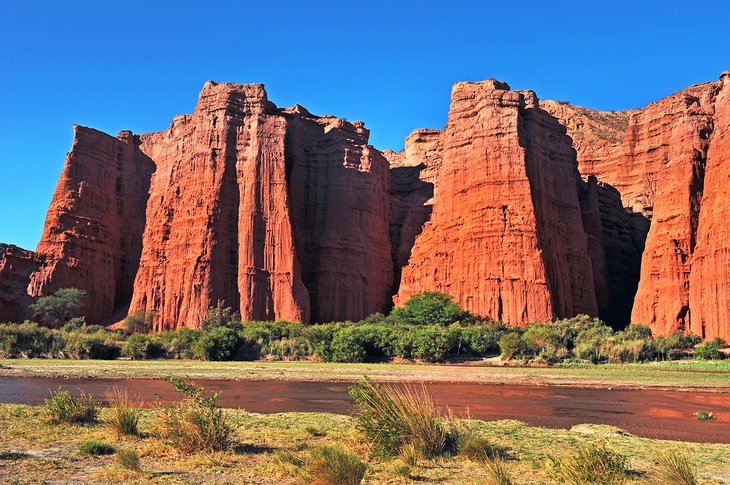
Located in the northwest of the country in the province of Salta, Cafayate is a small town of just over 12,000 residents. Although charming and with a few attractions worth visiting – including an archeological museum featuring objects from the local Indigenous people – most people arriving here are on their way to the Quebrada de Cafayate (or Quebrada de las Conchas).
An area known for its towering reddish rock formations, the quebrada offers one of the most stunning drives in South America on Route 68. More than 60 kilometers of paved roads cut through colorful sandstone, offering plenty of stops to discover narrow canyons, natural amphitheaters, towers of sandstone and clay, and the shores of the Rio de las Conchas.
Southern Fuegian Railway
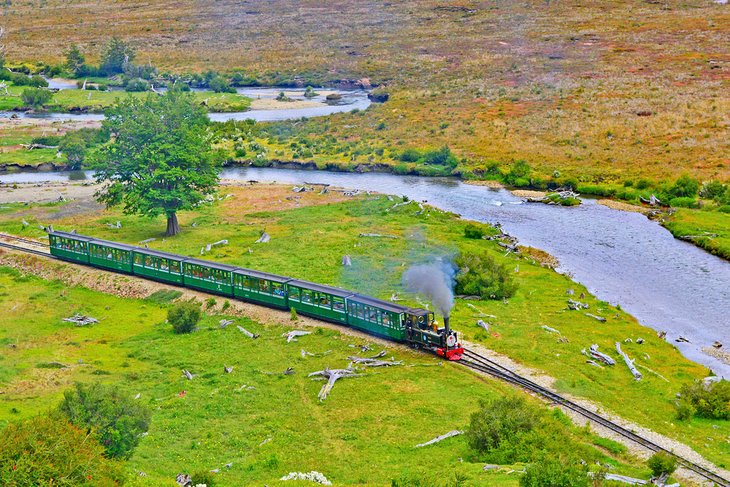
Better known as the "Train of the End of the World," this gauge steam railway is considered the southernmost railway in the world. Although it once provided a less happy service of connecting Ushuaia's penal colony with nearby cities, today it offers a beautiful seven-kilometer-long, 50-minute, tourist ride into the Tierra del Fuego National Park.
The train departs on new tracks (the original ones can still be seen nearby) from the End of the World station, riding alongside a thickly forested gorge and beautiful peaks all around. In winter, everything is covered in snow here; in other seasons, you'll appreciate the greens and reds that take over the valley throughout the season. The train makes one stop, so travelers can snap some photos at a local waterfall before continuing on into the national park.
First-class passengers will get a chance to taste some local specialties while onboard, including alfajores, biscuits filled with thick caramel, and empanadas, a fried or baked pastry filled with cheese or meat.
San Ignacio Mini Ruins
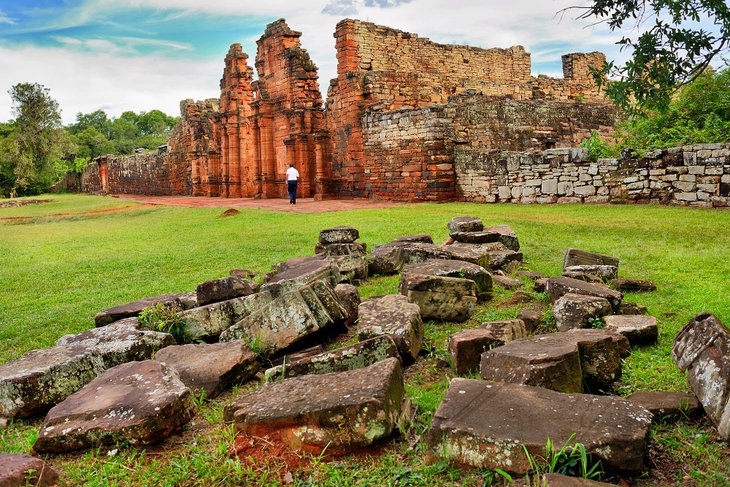
Back in the 1600s, during the Spanish colonial period, a number of Jesuit missions were founded in the northern province of Misiones, near the border with Brazil. At one point, over 3,000 Indigenous people lived in the mission, but as the Jesuits left the country, the buildings fell into ruins. Now a UNESCO World Heritage Site, the San Ignacio Mini are the largest and still best-preserved mission ruins in the country.
The original mission – built in red-brown stone in a style known as Guaraní Baroque -– was massive and included a monastery, a cabildo (administrative office), a cemetery, and a number of living spaces. The mission's church, which measured 74 meters long by 24 meters wide, is the best-preserved part of the ruins.
A small on-site museum tells the story of the mission, and there's a scale model of the original San Ignacio Mini.
Quebrada de Humahuaca
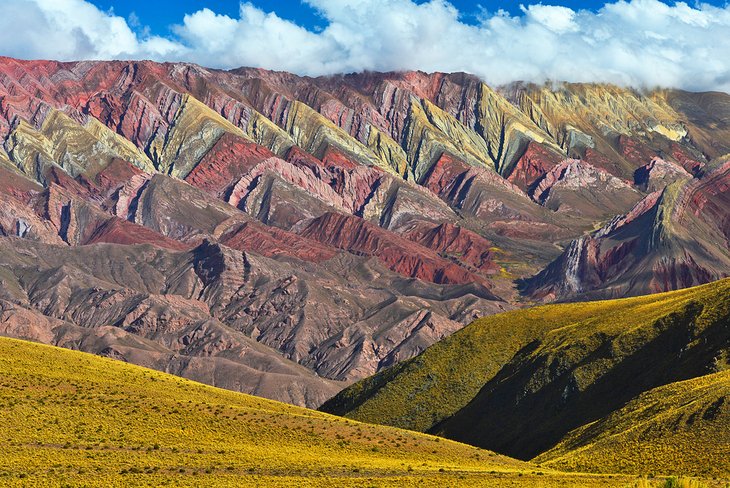
Quebrada (which literally translates to "broken") is a name used in Argentina to refer to deep ravines. And the 155-kilometer-long Quebrada de Humahuaca in the northwest of the country is a perfect example of a beautiful ravine with a wild river running through it in summer (the river dries up in winter).
A UNESCO World Heritage Site, this arid valley was once part of the Inca Empire and an important trade route. Today, most people arriving here come for its beauty – a mix of reds, pinks, and oranges that look almost painted on the hills around.
The tiny town of Iruya (only 1,000 people live here), not far from the quebrada, is a must-see as well. Built directly into the mountainside at an elevation of over 2,700 meters, it offers stunning views over the mountains and fertile valleys all around it. In town, the dirt streets, old houses, and colorful celebrations that incorporate Indigenous details offer great photo opportunities.
Teatro Colón
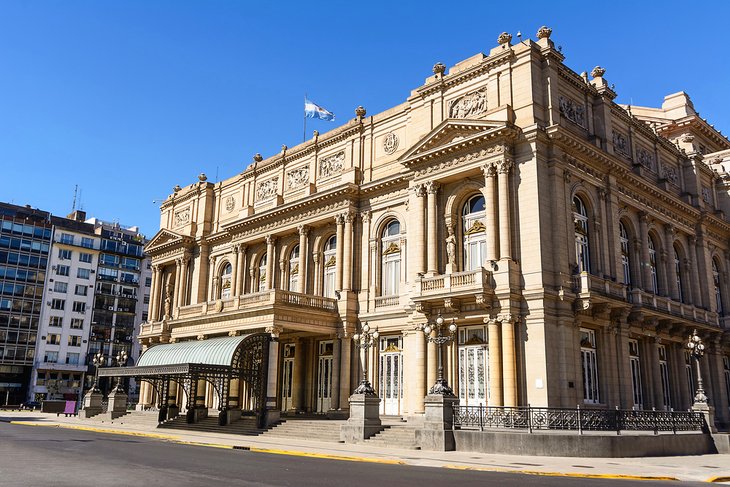
Buenos Aires' main opera house is considered one of the best opera theaters in the world because of its amazing acoustics. Built in 1908 to replace an earlier theater located in the same place, Teatro Colón was once a very popular destination for some of the biggest international opera companies and a favorite of Luciano Pavarotti. Rudolf Nureyev, Maria Callas, Plácido Domingo, and Julio Bocca have all performed here.
As beautiful as the building itself is on the outside, the inside of the theater is even more stunning. It offers just under 2,500 seats, and it's completely decorated in reds and golds, with touches of both Italian and French architecture. Artist and production designer Raúl Soldi painted the theater's stunning cupola.
The theater is also famous for its outstanding costume and scenic departments.
Aconcagua Mountain
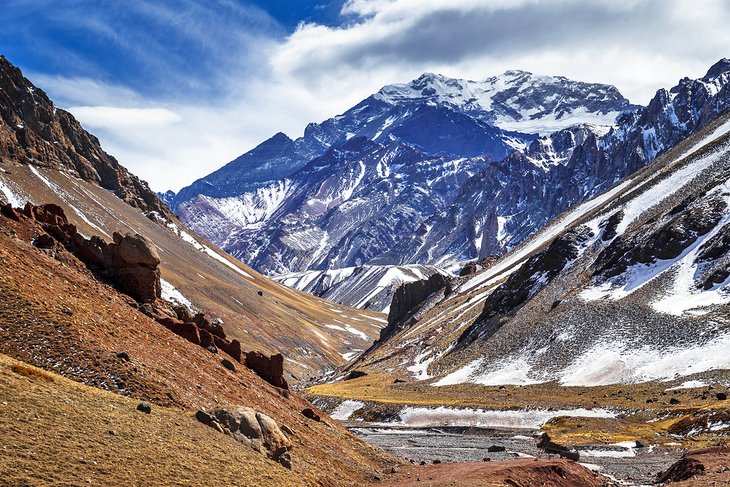
As the highest mountain in the Southern Hemisphere, Aconcagua is certainly impressive. The peak has a summit elevation of 6,961 meters and is part of the Andes, close to the border with Chile. For climbers, Aconcagua has special meaning, as it's one of the Seven Summits, the ultimate climbing list that includes the highest mountains in each continent.
The mountain falls within the limits of the Aconcagua Provincial Park, a protected area that offers a number of activities for outdoor lovers, including hiking and skiing. For those who are up for something a bit more challenging, the Horcones-Confluencia trail takes hikers up to the basecamp on the route up to the summit. It's a 14-kilometer-long trail with an elevation of 538 meters.
Laguna Horcones, a stunning blue lake fed by glaciers, is another popular attraction within the park.
Salinas Grandes
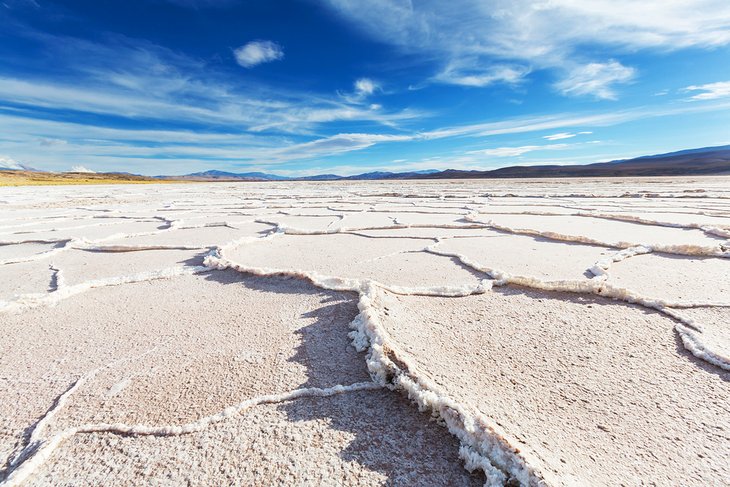
Sitting 3,450 meters (11,320 feet) above sea level, these stunning salt flats (the third largest in the world) cover an area of over 4,700 square kilometres, stretching over two provinces. This is a solitary and desolate, but stunningly beautiful area, past deserted routes, walnut tree plantations, lagoons, red sandstone mountains, and the odd herd of adorable vicuñas.
As this is an active salt flat, you'll likely find workers if you arrive during the daytime. If you can manage some Spanish, they'll happily show you around and explain how the salt is washed and scraped. Otherwise, you can simply walk around to admire their beauty, which extends as far as the eye can see.
Most visitors start their trip at the nearby town of Purmamarca, where just over 2,000 residents make their living either working in the salt flats or selling handicrafts to tourists in the town market. Tours to the salt flats also leave from here, including trips to the nearby Cerro de los Siete Colores (The Hill of Seven Colors).


